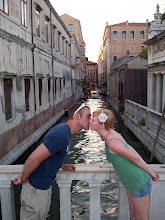
A separation of the shoulder is most often caused from contact sports. A schoulder separation is an injury involving the acromion process of the clavicle and the coracoid process of the scapula, also called the acromioclavicular joint (AC). Damage is dependendant on the extensiveness of the injury. There are three ligaments involved in this area. One is the acromioclavilar ligament (AC), one is the coracoiclavicular ligament (CC), and the last is the coracoacromial ligament.
X-rays are commonly performed first; then, if needed, an MRI scan is done to see the damage of the displacement. Shoulder separations are graded from 1 to 6. One is having the least damage and six is having the most damage. A rupture of both the AC ligament and the CC ligament is known as a grade 6 separation. Most often surgery will have to be done to fix this problem.
Some symptoms include: obvious dislocation, pain, swelling, and not being able to move the joint.
Treatments are generally to put the bones back into place, but surgery can be done if the separation is bad enough. A specific type of surgery is called an arthroscopic reconstruction. In this surgery, torn ligaments can be grafted to provide excellent results for the patient. Anti-inflammatory medication can be taken to decrease swelling. Splinting the shoulder with a shoulder immobilizer and letting the shoulder heal is another possible treatment. Of course the most obvious treatments are rest and ice. Sometimes patients may have complications with certain types of treatments, which may include: clavicle fracture, infection, scar, pain, and deltoid or trapezius muscle detachment. They may have to have further care and possibly physical therapy.
The image I have uploaded is an MRI T2 weighted fat saturation coronal image. The ligament tear is noted, which causes an AC separation. It is also noted that there is a highlighted area, this is inflammation in the joint space that should not be there!
References:
http://www.sportsinjuryclinic.net/
Image is from:radiology.med.miami.edu/x69.xml

No comments:
Post a Comment